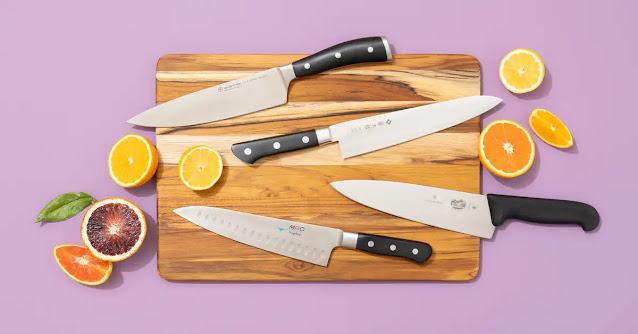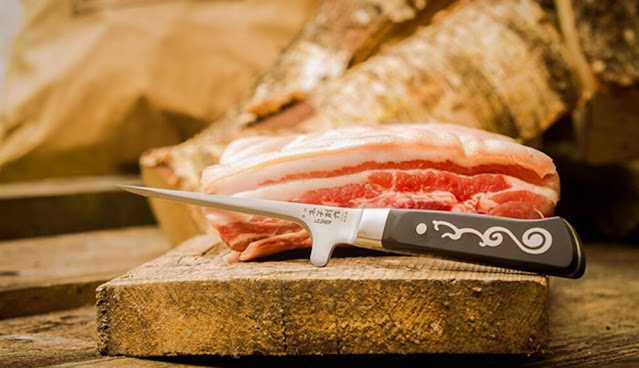Slice with Precision: The Ultimate Guide to Choosing and Using a Boning Knife
In the culinary world, precision and technique are paramount, especially when it comes to delicate tasks like deboning meat and filleting fish. Enter the boning knife, a versatile tool designed to navigate around bones and joints with ease, ensuring clean cuts and maximum yield. Whether you're a professional chef or a home cook, having the right boning knife in your arsenal can make all the difference in the kitchen. Join us as we explore everything you need to know about choosing, using, and caring for a boning knife.
Understanding the Boning Knife:
Anatomy of a Boning Knife:
Boning knives typically feature a narrow, flexible blade with a pointed tip, allowing for precise maneuverability around bones and joints. The blade may vary in length, with shorter blades ideal for poultry and small cuts of meat, while longer blades are suitable for larger cuts and fish.
The blade of a boning knife is often made from high-carbon stainless steel, offering durability, edge retention, and resistance to corrosion. Some models may feature a curved or straight edge, depending on personal preference and intended use.
Types of Boning Knives:
There are several types of boning knives tailored to different culinary tasks and preferences:
Flexible Boning Knife: Ideal for deboning poultry, removing skin from fish, and delicate filleting tasks.
Stiff Boning Knife: Suited for tougher cuts of meat and precise cuts that require stability and control.
Curved Boning Knife: Designed to follow the natural contours of meat and fish, facilitating smooth, fluid motions while boning.
Narrow Boning Knife: Perfect for getting into tight spaces and making intricate cuts with precision.
Choosing the Right Boning Knife:
Consider Blade Length and Flexibility:
Determine the primary tasks you'll be using the boning knife for and choose a blade length and flexibility that suits your needs. Longer, more flexible blades are versatile for a variety of tasks, while shorter, stiffer blades offer more control and stability for precise cuts.
Evaluate Handle Design and Comfort:
Look for a boning knife with an ergonomic handle design that fits comfortably in your hand and provides a secure grip, even when working with wet or slippery ingredients. Materials like wood, plastic, or composite offer durability and ease of maintenance.
Using Your Boning Knife:
Grip and Technique:
Hold the boning knife firmly but comfortably, with your index finger resting on the spine of the blade for stability and control. Use a smooth, slicing motion rather than applying excessive force to avoid damaging the meat or fish.
Angle the blade slightly towards the bone or skin to minimize waste and ensure clean, precise cuts. Take your time and work methodically, following the natural contours of the meat or fish for optimal results.
Maintenance and Care:
Proper maintenance is essential to keep your boning knife performing at its best. Clean the blade thoroughly after each use, avoiding harsh abrasives or abrasive sponges that can damage the edge.
Regularly sharpen the blade using a honing steel or sharpening stone to maintain its sharpness and cutting performance. Store your boning knife in a knife block or sheath to protect the blade and prevent accidents.
Conclusion:
A boning knife is an indispensable tool for any cook, offering precision, versatility, and control for a wide range of culinary tasks. By choosing the right boning knife and mastering proper technique, you can elevate your cooking skills and tackle even the most challenging cuts with confidence. So, equip yourself with a quality boning knife, hone your skills, and prepare to slice, debone, and fillet like a pro in the kitchen.




Comments
Post a Comment